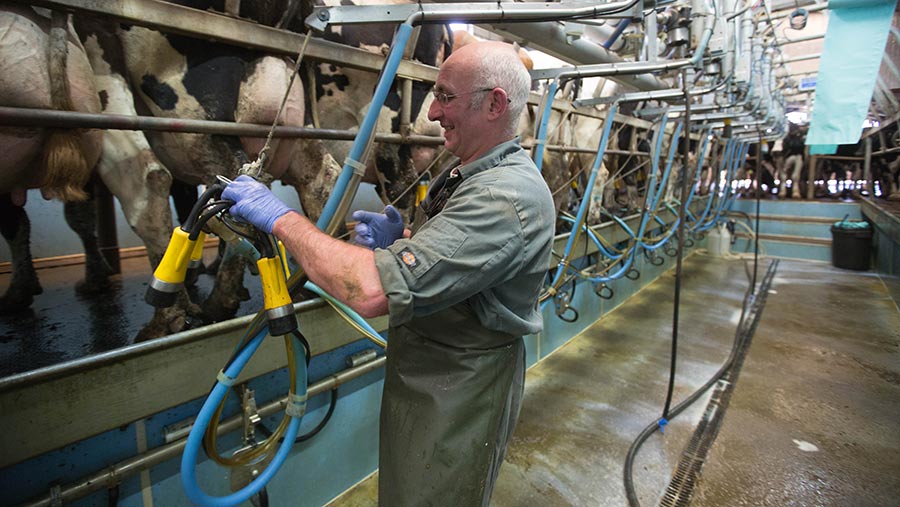How to get staff on board to cut mastitis in your dairy herd
 © Tim Scrivener
© Tim Scrivener People are motivated by feelings, not facts, and dairy farmers need to use this to help cut mastitis rates in their herd.
This is according to Danish dairy consultant Vibeke Fladkjaer Nielsen, who says humans are biologically primed to avoid change because it takes energy, and they choose what they know because it is easier.
See also: 7 staff management tips from a dairy farmer
“We assume that people think rationally and will change behaviour when they have more knowledge and the intention to do so. But we only have half an hour a day of rational capacity.
“The rest of the day we rely on automatic behaviour from our knowledge, experience, instincts and habits. Our willpower is similarly limited and exhausted by use,” she says. “We always choose the easy solution.”
Changing behaviour requires a combination of knowledge, ability and will, says Vibeke.
For long-term mastitis management, it is important to give the farm team knowledge, then find out what motivates individual staff members to adopt this.
Simply stating that pre-dipping is required (knowledge), showing people how to do it (ability) will not lead to a new routine (will).
Motivators
She explains that getting people to actually do something is down to external and internal motivation.
External motivators tend to fall into the “carrot and stick” category, such as financial bonuses or being shouted at, and are only short-term influences.
For long-term effects, Vibeke says farm owners and managers need to tap into the internal motivators of each member of staff, where they do something from interest and enjoyment.
“There are three basics for motivation: self-determination, for example, how our day job is going to be; feeling competent; and cohesion – there is a purpose, and we are part of a group.
“They are all found in everyone at different levels and it is [very] individual,” she says.
After interviewing many dairy farmers, Vibeke came up with five motivational types found on farm (see “The five motivation profiles”).
She says they are not new in psychology; however, they give insight to those who are managing staff.
“Spot yourself [type] first, then focus on what gives people a motivational ‘kick’. Motivation is all about feelings, so appeal to their feelings.
“Put aside your own motivations and look at theirs,” she adds.
Vibeke has discovered that managing people through motivation works regardless of culture, country or gender, although life stage does have an effect because people become calmer and more relaxed as they age.
And finding out more about people helps to shrink the timescale of change because once they are motivated, they will adopt the new practice.
The five motivation profiles
1. The perfectionist – often the farm owner
Work is everything for them – they prioritise work over family and do not take holiday.
They have high standards, yet they do not think they are doing anything special. Avoid competing with them, just be interested.
2. Result-oriented workhorse
They like recognition and to be acknowledged for their work. They like KPIs so they can see they have done well. Give them feedback in a crowd, not on their own.
3. Focused workhorse
Set them a difficult target and they get a kick out of reaching it – but they will not tell anyone about it.
4. Work-life balance employee
Cows do not really motivate them; they like to solve a task with other people. Like standard operating procedures, they have a rational mindset and really enjoy time off.
5. The wage earner
They want more money and fewer hours. They are always complaining. Motivators who were perfectionists end up here because they did not get motivated right away. They are not enjoyable to work with.
